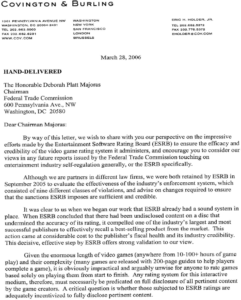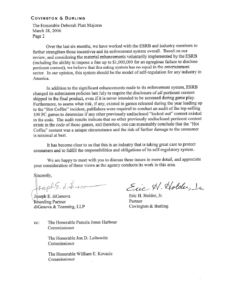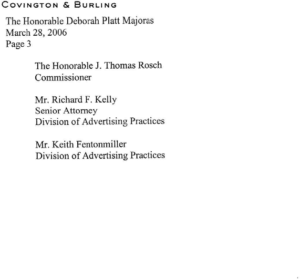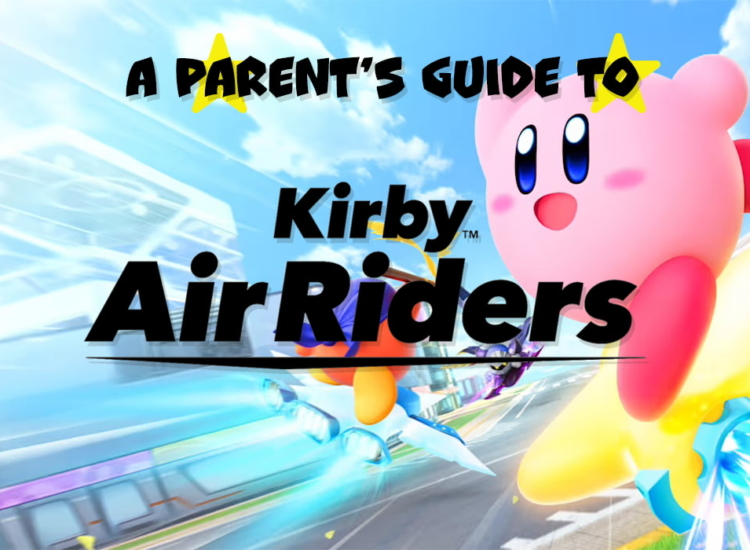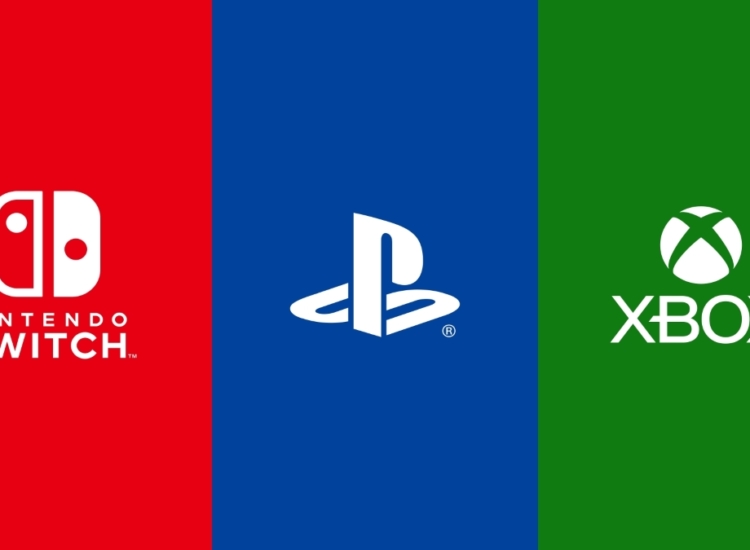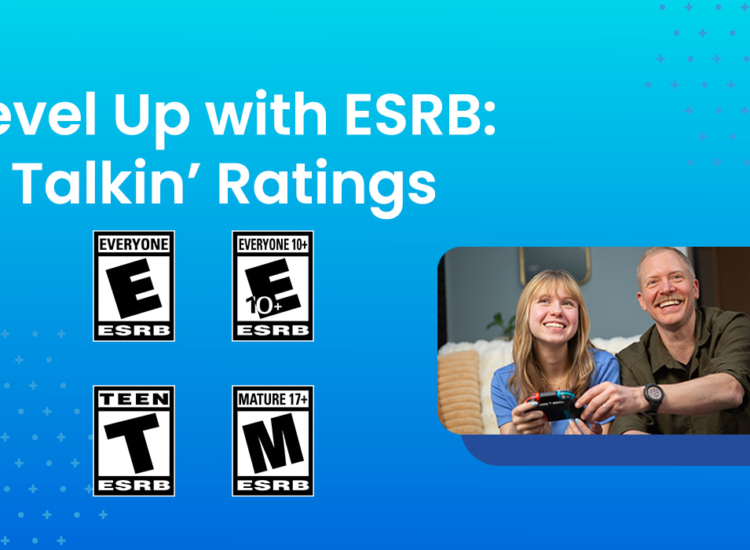Testimony of ESRB President Patricia Vance Before the U.S. Senate Committee on the Judiciary – Hearing on State Regulation of Violent Video Games and the First Amendment
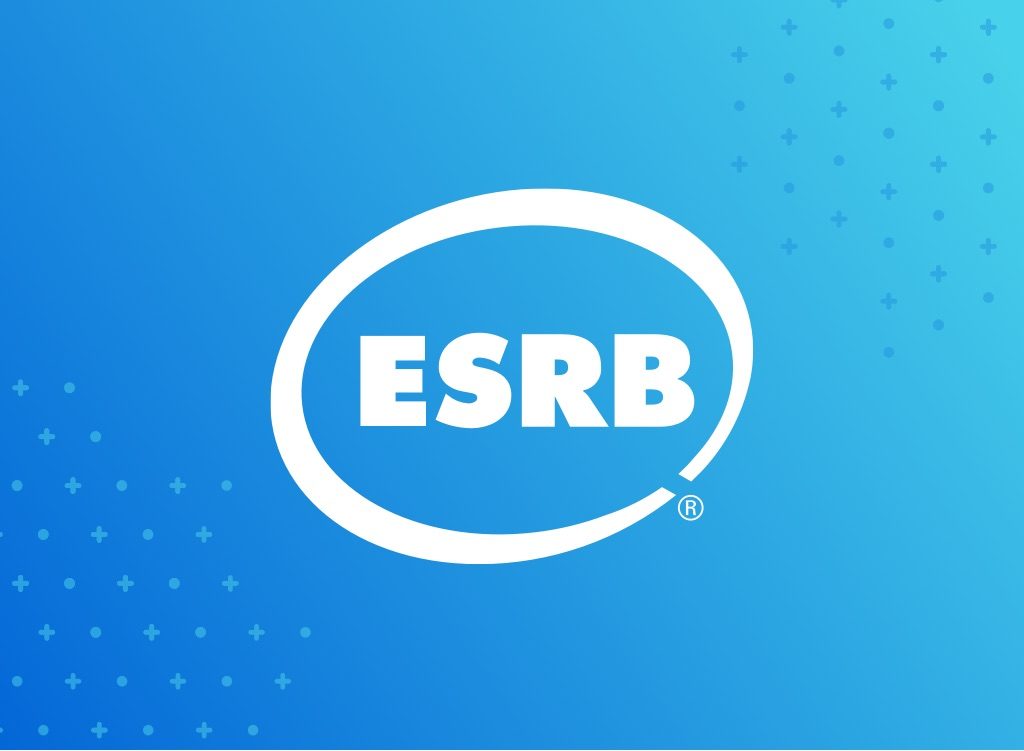
Written Testimony of Patricia E. Vance President, Entertainment Software Rating Board (ESRB)
U.S. Senate Committee on the Judiciary Subcommittee on the Constitution, Civil Rights and Property Rights
Hearing on State Regulation of Violent Video Games & the First Amendment March 29, 2006 2:00pm
Before I begin, I would like to respectfully thank Chairman Brownback and Ranking Member Feingold for the opportunity to appear today to present an overview of the ESRB rating system. The issues being discussed in today’s hearing are critically important, especially to parents, to whom I believe our self-regulatory system offers a valuable, reliable and credible tool to make the right video game choices for their families. I ask consent that my full statement, along with instructive appendices, be made a part of the hearing record.
Background
The ESRB was created in 1994 to provide consumers, particularly parents, with the information they need to make informed computer and video game purchase decisions. The ESRB rating system was developed after consulting a wide range of child development and academic experts, analyzing other rating systems, and conducting nationwide research among parents. Through these efforts, ESRB found that what parents really wanted from a video game rating system were both age-based categories and, equally if not more importantly, objective and detailed information about what is in the game. Those surveyed agreed that a rating system should inform and suggest, not prohibit, and that the rating system should not attempt to quantify objectionable incidents, but instead should reflect the overall content and objective of the game.
Since its inception, the rating system has been periodically enhanced, revised and updated to not only ensure that we continue providing the best possible service to those who rely on the ratings, but also to keep pace with what is a rapidly evolving medium and industry. Today, we remain extremely proud of the ESRB rating system and the information it provides. We have assigned over 12,000 ratings in our history, and average over a thousand a year. Millions of parents rely on ESRB ratings to choose games they deem appropriate for their children and families, and we value greatly the trust they have placed in our ratings.
It is important to note that according to the U.S. Federal Trade Commission, 83% of the time adults are involved the purchase of games. It therefore stands to reason that a mission-critical ESRB activity is raising awareness and use of the rating system among parents, especially as the variety of game genres continue to expand to meet the demands of an aging game consumer. (The average age of a gamer today is 30.)
The ESRB Rating System
Although voluntary, the rating system has been universally adopted by the game industry, and virtually all computer and video games sold in the U.S. today carry an ESRB rating. Based on the aforementioned research conducted in 1994, the ESRB rating system was created with two equally important parts:
- rating symbols, easily identifiable on the front of game packaging that suggest the most appropriate age group for each game, and
- content descriptors, found on the back, clearly stating why a game received a particular rating or indicating content that may be of interest or
Here’s an illustration of the two parts:

Rating Categories and Definitions
EARLY CHILDHOOD
Titles rated EC (Early Childhood) have content that may be suitable for ages 3 and older. Contains no material that parents would find inappropriate.
EVERYONE
Titles rated E (Everyone) have content that may be suitable for ages 6 and older. Titles in this category may contain minimal cartoon, fantasy or mild violence and/or infrequent use of mild language.
EVERYONE 10+
Titles rated E10+ (Everyone 10 and older) have content that may be suitable for ages 10 and older. Titles in this category may contain more cartoon, fantasy or mild violence, mild language, and/or minimal suggestive themes.
TEEN
Titles rated T (Teen) have content that may be suitable for ages 13 and older. Titles in this category may contain violence, suggestive themes, crude humor, minimal blood, simulated gambling and/or infrequent use of strong language.
MATURE
Titles rated M (Mature) have content that may be suitable for persons ages 17 and older. Titles in this category may contain intense violence, blood and gore, sexual content, and/or strong language.
ADULTS ONLY
Titles rated AO (Adults Only) have content that should only be played by persons 18 years and older. Titles in this category may include prolonged scenes of intense violence and/or graphic sexual content and nudity.
Content Descriptors
Over 30 different content descriptors are currently employed by the ESRB rating system. They span various categories of concern to parents, including but not limited to violence, language, suggestive or sexual content, gambling and use of controlled substances.
Rating Category Breakdown
Though violent games tend to get a disproportionately high amount of attention, the reality is that the vast majority of games rated by ESRB are appropriate for younger players. As a point of reference, of the 1,133 ratings assigned by the ESRB in 2005, 50% were rated E (Everyone), 12% were rated E10+ (Everyone ages 10 and up)1, and 24% were rated T (Teen). Games rated M (Mature) represented 12% of rating assignments, with the EC (Early Childhood) and AO (Adults Only) categories comprising the remainder.
Despite the media’s singular focus on M (Mature) games, the percentage of M (Mature) rating assignments did not increase in 2005. It is also important to note that in 2005 not one M (Mature) rated game made it onto the Top 10 bestseller list. That being said, with the average age of gamer increasing every year, it is reasonable to expect that the number of games targeting a more mature market to stay at least at the same level, if not increase, in the coming years.
Game Raters
ESRB game raters are recruited from one of the most culturally diverse populations in the world – New York City. The raters are all adults and are not required to be gamers themselves; a gamer-only rating system would likely bias rating assignments as they would surely bring a different sensibility to content than the pool of raters we have always used. Typically, our raters have some experience with children, and have no ties to the entertainment software industry. They are specially trained by ESRB to rate computer and video games and work on a part-time basis, attending no more than one
2-3 hour rating session per week. The ESRB strives to recruit raters who are demographically diverse by age (must be at least 18), martial status, gender, race, education and cultural background to reflect the U.S. population overall.
Rating Process
Prior to a game being released to the public, game publishers submit a detailed written questionnaire to the ESRB, often with supplements (such as lyric sheets, scripts, etc.), specifying exactly what pertinent content will be in the final version of the game. Along with the written submission materials, publishers must provide a videotape capturing all pertinent content, including the most extreme instances, across all relevant categories including but not limited to violence, language, sexual or suggestive, controlled substances and gambling. Pertinent content that is not programmed to be playable but will exist in the final game’s code base must also be disclosed (as of July 2005).
Once the submission is checked by ESRB for completeness, which may also involve ESRB staff members playing a beta version of the game, the video footage is reviewed by at least three or more raters. Upon independently reviewing the video, the raters recommend appropriate rating categories and content descriptors for the content in each scene reviewed and the game overall. Raters consider many elements in their assignments including context, realism, frequency, the reward system, the degree of player control and overall intensity, among others.
The ESRB checks the raters’ assignments for majority consensus, conducts a parity examination where appropriate to maintain consistency and trust in the ratings, and issues an official certificate with the rating assignment to the game publisher. If consensus is not reached in the first rating session, additional sessions will be conducted until a clear majority consensus can be identified. Once issued, the publisher is then able to either accept the rating as final or revise the game’s content and resubmit the game to the ESRB, at which time the process starts anew. Publishers also have the ability to appeal an ESRB rating assignment to an Appeals Board, which is made up of publishers, retailers and other professionals.
Pertinent Content
As stated above, pertinent content spans various categories including violence, profanity, sexual or suggestive content, depiction and/or use of controlled substances, gambling, etc. The following chart explains what types of content are considered pertinent from a ratings standpoint:
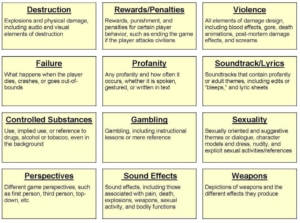
ESRB Enforcement System
As the game industry’s self-regulatory body, the ESRB is responsible for the enforcement of its rating system. The ESRB enforcement system has been praised by the U.S. Federal Trade Commission and several government leaders for its efficacy and comprehensiveness, 2 and sets it apart from other entertainment media rating systems in its scope and severity. Companies who do not comply with ESRB guidelines are subject to a wide range of ESRB sanctions, including fines, corrective actions, and other penalties. In fact, a complete review of the ESRB enforcement system was recently completed, with the expert counsel and support of prominent attorneys, Eric Holder, Jr. and Joseph DiGenova, resulting in a new class of violations for an “egregious” failure to disclose pertinent content, carrying a fine up to $1,000,000, among other enhancements. A letter from both Mr. DiGenova and Mr. Holder is attached for the consideration of this Subcommittee.3
Ratings
Every publisher of a game rated by the ESRB is legally bound to disclose all pertinent content when submitting the game for an ESRB rating, including, as of July 2005, content that is programmed to be inaccessible but will remain “locked out” in the final code of the game. To ensure that all pertinent content was fully disclosed during the rating process, after a game is publicly released, ESRB testers review randomly and hand-selected final product. In the event that material that would have affected the assignment of a rating or content descriptor is found to have not been previously disclosed, the ESRB is empowered to impose corrective actions and a wide range of sanctions, including points, monetary fines up to $1 million for the most egregious offenses, and even suspension of rating services. Corrective actions can include pulling advertising until ratings information can be corrected, re-stickering packaging with correct ratings information, recalling the product, and other steps the publisher must take so the consumer has accurate information.
Last summer, a widely publicized incident involving the game Grand Theft Auto: San Andreas showed how effective and forceful an enforcement system we have at our disposal. After ESRB confirmed that the game’s publisher, Rockstar Games, had not disclosed sexually explicit content that was “locked out” in the code of the game but could be accessed if players downloaded from the Internet a modification (dubbed “Hot Coffee”) created by a hacker, severe measures were taken by the ESRB, and immediate corrective actions were demanded of Rockstar. ESRB revoked the game’s initial M (Mature) rating and re-rated it AO (Adults Only). Additionally, ESRB required the publisher to advise retailers to immediately cease sales of the game until all inventory in the retail channel could either be re-stickered with the AO rating, or existing copies could be exchanged for new versions without the locked-out content, maintaining the original M rating. Further, the publisher agreed to make available on the Internet a patch for parents to download which would make the modification inoperable on the PC version of the game. I submit that there is no other industry self-regulatory system willing or capable of imposing such sweeping sanctions on its own members, which in this particular case resulted in the removal of a top-selling product from the market, a major loss of sales and a drop in shareholder value.
It is true that opportunistic activists with their own agendas capitalized on the issue by casting “Hot Coffee” as evidence of a broken rating system and turning it into a political football. However, the facts make it abundantly clear that the actions taken by ESRB are strong evidence of an extremely capable self-regulatory body. In 30 days, the ESRB had thoroughly investigated a complex and unprecedented situation affecting one of the most popular video games ever released, had assessed the implications and scope of the content and its availability, changed its policies regarding disclosure requirements for locked-out content, and imposed prudent corrective actions on the publisher that effectively removed a top-selling product from the marketplace, all of which served to prevent further damage to consumers. These actions were taken with the interest of consumers and their trust in the ratings as our highest priority. Contrary to what some may say, there exists no rating system, nor could there ever be, that would have discovered this content prior to the game’s release. The only course of action was to respond quickly and effectively, and revise policies as necessary to ensure that a similar situation does not arise again in the future. That is precisely what ESRB did.
Advertising & Marketing
ESRB self-regulatory activities span advertising and marketing practices, as well. Publishers of games carrying an ESRB rating are also legally bound to follow the industry-adopted “Principles and Guidelines for Responsible Advertising Practices” along with an “Advertising Code of Conduct.” The ESRB’s Advertising Review Council (ARC) is responsible for the oversight, compliance, and enforcement of all industry-adopted advertising and marketing guidelines. Specific marketing rules codified in the “Code of Conduct” address everything from the required size of rating icons on game boxes to guidelines for cross-sells and cross-promotions. The rules also address inappropriate target marketing; M (Mature) rated products cannot be advertised in media vehicles that have a strong following among minors (i.e., TV – no higher than 35% under 17 audience composition is permitted; Print – no higher than 45% or more under 17 readership composition is permitted).
Guidelines require that game advertisements accurately reflect the nature and content of the product and assigned rating; should not glamorize or exploit the ESRB rating; should be created with a sense of responsibility towards the public; should not contain any content that is likely to cause serious or widespread offense to the average consumer; and must not specifically target consumers for whom the product is not rated as appropriate.
ARC diligently monitors compliance with its marketing guidelines, and actively enforces them, as confirmed repeatedly in the Federal Trade Commission’s Report to Congress on the Marketing of Violent Entertainment to Children4.
Retailer Support
Most retailers in the U.S. voluntarily refuse to stock games that do not carry an ESRB rating. While the ESRB does not have the authority to stop the sale of M (Mature) rated games to minors, we do work closely with retailers and game centers to display information that explains to consumers how the rating system works and, where appropriate, support their store policy pertaining to the sale or rental of Mature-rated games to minors without parental consent. Many major retailers currently implement their own store policies requiring age verification for the sale of games rated M (Mature), and ESRB encourages and supports these efforts.
In fact, in November 2005, the ESRB Retail Council (ERC) was established to improve ratings education and enforcement of store policy restricting the sale of M-rated games. The first meeting of this group was convened in January 2006. Members of the ERC include Wal-Mart, Best Buy, Target, Gamestop/EB Games, Toys R Us, Circuit City, Blockbuster, and Movie Gallery/Hollywood Video.
Consumer Research
In order to ensure that the ratings assigned by ESRB reflect the standards and meet the expectations of average American consumers, we conduct consumer research on an annual basis in ten different markets across the U.S. This research has consistently shown that parents overwhelmingly agree with the ratings that we apply. Peter D. Hart Research Associates, a nationally renowned independent opinion research firm, tests randomly selected video games rated during the prior 12 months with parents of children between the ages of 6 and 17. Parents are shown clips of actual game footage and then asked what rating they would apply. They are then asked to compare their own rating to the one actually assigned by the ESRB and whether they agree with it.
Last year, this research found that parents agreed, or even thought our ratings were too strict, 87% of the time. Parents described the actual ratings as “about right” in 82% of all instances and “too strict” 5% of the time. Ratings issued by watchdog groups like the National Institute on Media and the Family also support the reliability and accuracy of ESRB ratings. In fact, a recent review of NIMF’s own age recommendations showed overwhelming agreement with those assigned by ESRB. In a pluralistic society like ours, which encourages and embraces diversity among its citizens, no rating system could ever achieve 100% popular consensus. However, it is clear that ESRB ratings are well within the American mainstream, and that’s exactly where we strive to remain.
That said, ratings are only effective if they are being used, and so ESRB also commissions annual research of ratings awareness and use. In our most recent study conducted earlier this month (March 2006), we found that 83% of parents surveyed were aware of the ESRB ratings (up from 78% in 2005) and 74% use them regularly when choosing games for their families (up from 70% in 2005).
Awareness of content descriptors also continues to grow, and is now at 65% (up from 61% in 2005). Fifty- three percent (53%)of parents “never” allow their children to play M-rated games and 41% “sometimes” do. Parents of kids under the age of 13 are almost twice as likely to “never” allow their children to play an M-rated game. Fully 91% of respondents indicated that they trust the ESRB ratings, saying their trust has either stayed “about the same” (76%) or increased (15%) during the past year. Other opinion polls conducted by Hart Research show that parents not only agree with specific ESRB ratings, but that 90 percent of them say the ESRB rating system provides the kind of information they need.
Supporting the Hart research is a survey released by the Henry J. Kaiser Family Foundation in 2004, which found that among all entertainment rating systems (TV, movies, music, and games), parents found the ESRB ratings to be the most useful, with 91% finding them “somewhat (38%)” to “very useful” (53%).
Consumer Education & Outreach
As noted earlier, a study conducted by the Federal Trade Commission in September 2000 reported that adults are involved in the purchase of games 83% of the time. The ESA has found in similar research that adults make or are involved in 92% of all game purchases. Regardless of the data source, it is clear that parents are either involved in or ultimately making the decision about what games their kids are playing an overwhelming majority of the time.
Keeping in mind the significant role parents play in making purchase decisions, the ESRB launched a multi- channel consumer marketing campaign in October 2003 featuring the slogan “Ok To Play? – Check The Ratings.” The campaign, which is primarily composed of a public service announcements (PSA pictured at right) and a retail partnership program, encourages parents to use both components of the rating system (rating symbols and content descriptors) to determine if a game is appropriate for their family.
The campaign generates over a billion consumer impressions annually. Over 20 publications have run the print PSA ads, including publications like Good Housekeeping, TV Guide, Family Circle, Oprah, Better Homes and Gardens, Ser Padres, Healthy Kids en Espanol, NY Post, Ladies’ Home Journal, Entertainment Weekly, Redbook, Parents, Working Mother, and Disney Adventures, among others. More than a dozen top game enthusiast publications support the campaign as well.
Because more than half of all games sold each year in the U.S. are sold during the holiday season, the ESRB also conducts an annual Holiday Outreach initiative that includes satellite and radio media tours, print and radio PSAs, targeted outreach to parents through print and online outlets, and audio news releases. Last year’s campaign generated approximately 150 million impressions during the holiday season alone.
Partnerships
Retail
A critical part of our consumer awareness campaign is its unique retail partnership program. The overall goal of our retailer partnerships is to ensure that consumers are educated about and reminded to check the ratings when they are shopping for computer and video games. Rather than send posters or stand-alone brochures to stores that consumers may not notice, we have succeeded in getting signage displayed in stores representing the 17 top national retail accounts representing 90% of game sales, many of which have incorporated ratings education into their in-store display fixtures. ESRB has also provided many of these retailers with materials for sales associates to learn about the rating system, and has facilitated the training of 30,000 store associates through an online training module.
National PTA
The ESRB has recently been working closely with the National PTA, whose president, Anna Weselak, called the ESRB ratings “an extremely useful and informative tool” while strongly encouraging parents to use it when choosing games for their families. ESRB is working with the NPTA to develop parent education materials that would be distributed to all state and local PTA chapters.
State and Local Governments
ESRB has established partnerships with various state and local governments, working with leaders and officials to promote and educate parents about the ratings. County Executive Andy Spano (Westchester County, NY), Assemblyman Ed Chavez (D-CA), Puerto Rico Secretary of Consumer Affairs Alejandro Garcia and others have teamed up with ESRB to implement PSA campaigns, educational brochures and other projects aimed at raising awareness and use of the ratings.
Closing Statement
I hope this testimony has provided you with a clearer and broader understanding of the ESRB’s self-regulatory role and responsibilities. As a relatively new and quickly evolving medium, there are many misperceptions about video games in general, and I’m grateful to have had the opportunity to explain what we do and how we do it. We take great pride in our work and the service we provide to parents and other consumers of computer and video games. I look forward to having a constructive dialogue with members of the committee and answering any questions that you may have.
Thank you.
1The E10+ rating category was introduced in March 2005.
2See Appendix A at the end of this document
3See Appendix B, at the end of this document
4Federal Trade Commission, Report to Congress on the Marketing of Violent Entertainment to Children, 2001-2004
Comments about the Entertainment Software Rating Board
U.S. Federal Trade Commission
[The electronic game industry is] disclosing rating information in most forms of advertising, and generally are doing so in a clear and conspicuous manner. (page 28 FTC Report 7/2004)
As the Commission has recognized in its prior reports, the electronic game industry has adopted numerous standards that limit children’s exposure to ads for Mature-rated products and require the disclosure of rating information in most forms of advertising.
The industry is actively enforcing these standards and penalizing those companies found to be in noncompliance. (page 28 FTC Report 7/2004)
[The electronic game industry has] taken positive steps in response to many of the Commission’s past recommendations. (page 29 FTC Report 7/2004)
For the electronic game industry, the Commission found widespread compliance with industry standards limiting ads for M-rated games where children under 17 constitute a certain percentage of the audience – 35 percent for television and 45 percent for print. (page iii FTC Report 6/2002)
The Commission reviewed the packaging for 12 popular games. The Commission found a high level of compliance with the ESRB’s packaging requirements. The packaging for all but one game fully complied with the requirements for the appearance, location, and size of the rating icons on the packaging, game disks, and game manuals. Compliance was nearly perfect with regard to the appearance and size of the content descriptors and the location of the content descriptor box. All of the rating icons and content descriptors were readable. (page 29 FTC Report 6/2002)
The Commission can report real progress in the disclosure of rating information in most forms of advertising, and nearly universal compliance by both the movie and electronic games industries with industry standards that restrict certain ad placements. (page 30 FTC Report 6/2002)
The ESRB has also undertaken substantial efforts to raise public awareness of the rating system and to educate the industry about compliance. (page 22 FTC Report 6/2002)
The electronic game industry has adopted numerous standards that discourage the targeting of children for Mature-rated products and require the disclosure of rating information in most forms of advertising. In addition, the industry has in place an extensive system to enforce those standards and bring about continued improvement in industry practices. (page 30 FTC Report 6/2002)
The Commission is encouraged by the motion picture and electronic game industries’ initial responses to it September 2000 Report, but it is disappointed by the almost complete failure of the music recording industry to institute any positive reforms. (page iii FTC Report 4/2001)
The Commission found that practices adopted in the movie and electronic game industries since the September 2000 Report go a long way toward addressing some of the previously identified shortcomings in these areas. Both industries have taken steps to better communicate rating information to parents, and the game industry and a number of movie studios have placed some specific limits on ad placements to avoid targeting youths. (page 34 FTC Report 4/2001)
The Commission’s review shows some improvement in the electronic game industry’s advertising practices. The Commission found no ads for M-rated games on the popular teen television programs reviewed. The game company print ads nearly always included the game’s rating icon (or the rating pending icon) and, in a large majority of instances, content descriptors. Television ads gave both audio and video disclosures of the game’s rating, and more than 80 percent of the official game publisher Web sites displayed the game’s rating. (page ii FTC Report 4/2001)
Six months after the Commission’s September 2000 Report, it appears that the motion picture and electronic game industries have taken a number of significant steps to limit marketing violent R-rated films and M-rated games to children and to provide parents with more information regarding the content of their products. (page 25 FTC Report 4/2001)
Government Officials & Others
U.S. Senator Joseph Lieberman (D-CT): Praised the ESRB as offering “the best rating system in the entertainment media,” and recognized “ESRB’s ongoing commitment to helping parents make smart choices for their kids.”
U.S. Senator Herb Kohl (D-WI): “The ratings system makes it crystal clear whether or not the content of the video game is appropriate for young children.”
U.S. Senator George Allen (R-VA): “As a father, I appreciate that parents want to purchase their children these exciting games. I understand that it’s easy just to grab whatever’s on the shelf, but I encourage all parents to check a game’s rating to make sure that what they’re giving as a gift is OK to play.”
County Executive Andrew Spano (Westchester, NY): “The ESRB ratings provide a helpful resource for parents in determining whether the video games that their children play are suitable. As the popularity of video games continues to rise, familiarity with the ratings system becomes all the more important.”
Anna Weselak, National PTA President: “The ESRB rating system is an extremely useful and informative tool. We urge parents to check the ratings every time they buy video games for their families.
